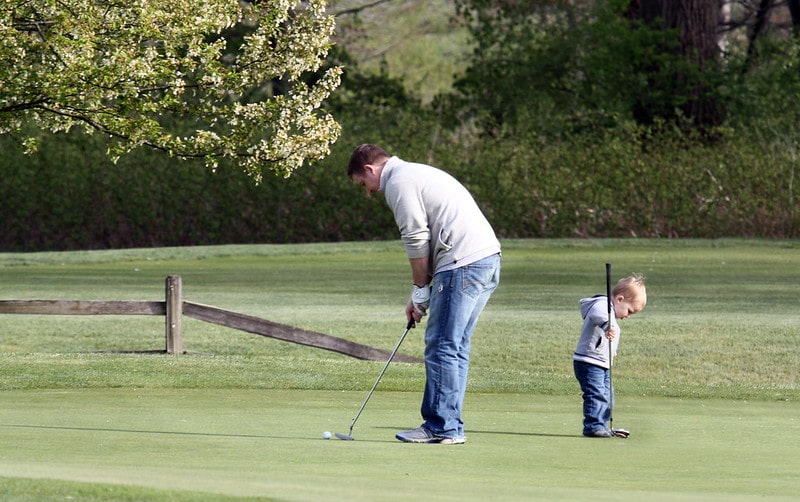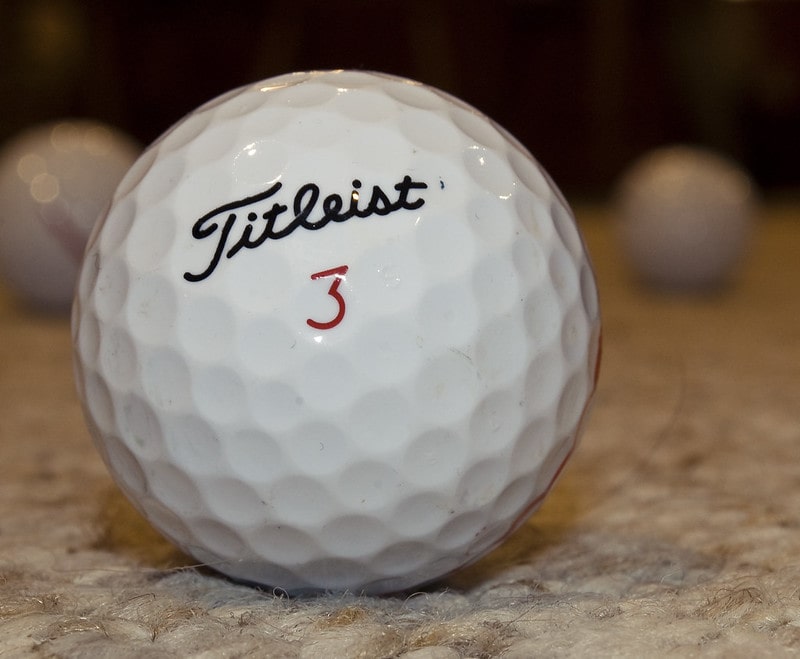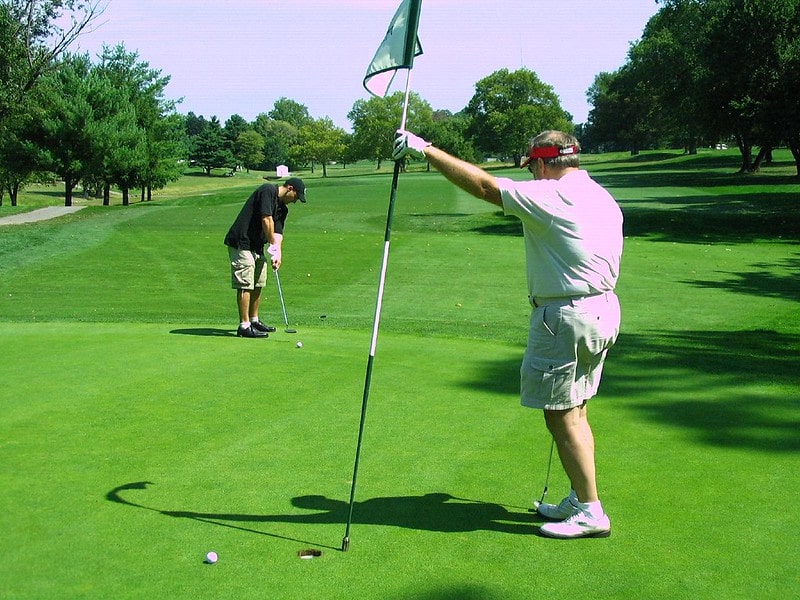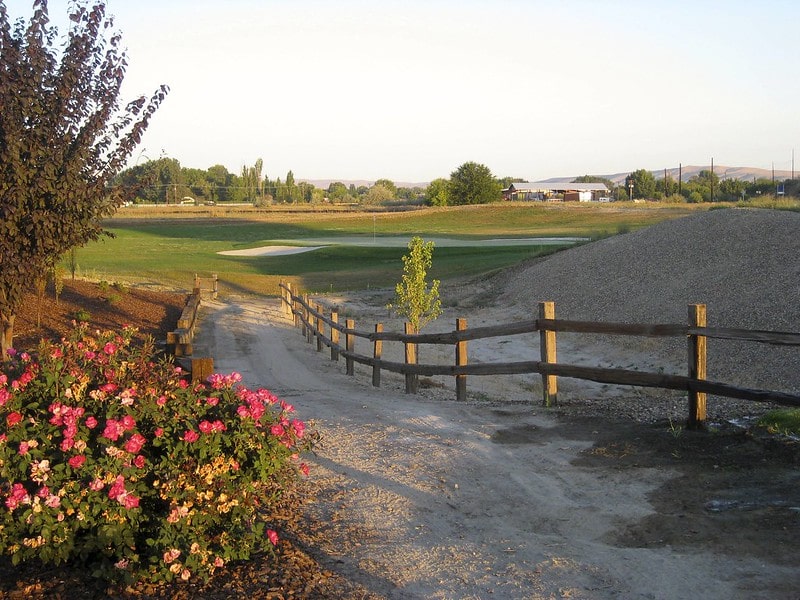Last updated on May 10th, 2021
According to the National Golf Foundation more than 24 million people played golf on a golf course and almost 1 million people participated in off-course golf activities in 2019. Golf is popular in countries including Ireland, Canada, United Kingdom, United States etc. Golf is a club and ball sport in which players use various clubs to hit balls into series of holes on a course in as few strokes as possible. With these facts about golf, let us explore more about the game including its history, evolution, equipment, famous golf players, golf courses, rules and much more.
50 Interesting facts about golf
1. Golf is the 10th most popular sport in the world with 450 million fans. During the 2020 PGA Championship round, 6.873 m viewers tuned in on CBS to catch the action on the greens.
2. The modern game of golf can be traced to Scotland during the 15th century. Although the ancient origin of the game is not clear, historians believe that golf may be associated with paganica, an ancient Roman game that involved hitting a leather ball using a bent stick. It may also be rooted in the Chinese game called chuiwan, wherein a stick is used to hit a small ball to sink it into a hole in the ground.

3. Golf is a ball game that does not have a standardized playing area or court. The playing field consists of golf courses that feature a series of holes located in different terrains. The difficulty of the game increases or decreases depending on the layout and arrangement of the terrain.
4. Golfers have to contend with different forms of terrain in a course. These include the fairway, the long-grass rough, the sand traps or bunkers, and hazards such as rocks and water. The courses with the best designs feature holes with a unique layout.
5. The term golf originated from the Netherlands. The Dutch word for club is “kolve” or “kolf”. The Dutch likely introduced the word to the Scots through trading during the 14th until the 17th centuries. Due to linguistic differences, the Scottish dialect modified the pronunciation and the terms became “gouff” and “goff”. In the 16th century, the term became, simply, golf.
6. The oldest known golf course in the world is The Old Course at St. Andrews in Fife, Scotland. It is called the Home of Golf and is treated as a pilgrimage site by fans and players of the game.
7. Golf may be an elite sport now but it was originally simply a game that shepherds played to pass the time. They hit rocks using sticks during breaks. Scotland’s geographical landscape was – and still is – ideal for playing the game.

8. In the past, a golf course may consist of 5 holes, 12, 15, 23, and so on. By the time 1754 rolled around, St. Andrews’ course had 12 holes. Golfers played 10 of these holes twice, which means that a round of golf at the time consisted of 22 holes.
9. Before 1764, The St. Andrews Old Course had 22 holes. The 18-hole courses common today came about when golfers agreed to combine certain holes to make 18 holes. The change in the layout was recommended by William St. Clair who was the then-captain and winner of the last game using the 22-hole configuration.
10. Most golf courses consist of 18 holes. These are divided into the front 9 and the back 9. Tournaments generally have a playing format of 18 holes.
11. The first golf courses in Scotland were village greens and cattle pastures. This is due to the wide expanse of space that was available to play the game. When the sport came to the U.S., Americans also began using pastures and meadows.

12. The first balls used in playing golf were made from leather balls stuffed with bird feathers. These balls could travel longer distances than other types of balls that were made after. They were last used in the mid-1800s.
13. The next batch of golf balls was made from wood – specifically, beech. Since they were hand-carved, the balls were not perfectly round, which made them more difficult to play with because they were unpredictable.
14. The first golf balls that were mass-manufactured were made from the sapodilla tree sap. The sap was heated and dried in a round mold. These balls were called gutties and were simply re-heated and re-molded when they lost their shape.
15. The nicked and banged up gutties were the inspiration for the modern golf balls. Since the small nicks stabilized the ball’s flight path, golf ball manufacturers began to carve and etch textures into the surface of the balls.
16. The modern golf ball is made of urethane and has 300 to 500 dimples. The average depth of these dimples is around 0.010 inch. The dimples are typically round but other shapes are used as well. Callaway’s HX golf ball, for example, has hexagonal dimples.
17. To meet regulation standards, golf holes must have a diameter of 4.25 inches and a depth of 4 inches. Any more or less will make the hole non-regulation. Holes are cut into the ground using special hole cutters that remove the soil in the shape of a cylinder in just one pull.

18. Golf holes actually do not stay in one place and are moved regularly. This is to keep the condition of the greens in top shape. Moving holes is important especially during busy days when the greens are at risk of being worn out.
19. At one point in its history, golf was actually banned in Scotland by King James II. In 1457, Scotland was at war and needed to focus on military training. Golf was so popular that it distracted even the military, prompting the king to prohibit the sport. The ban was largely ignored by the Scots.
20. Royal approval of golf after the ban was cemented by King James IV (still of Scotland). The king became a fan of the sport and was an enthusiastic golfer himself. His endorsement is the reason why golf became popular among the royals.
21. Mary Queen of Scots is considered the Mother of Golf because she was very likely the first female known to play the sport. The queen was an avid golf player and always took the time to play a round. She was such a fan that she was supposed to have played golf just days after her husband’s murder. Although likely a rumor started by her enemies, this was one rumor that damaged Mary’s reputation.

22. Mary Queen of Scots brought the game to the French during her stay in the country in the 15th century. She was guarded by French military aides who were also called cadets. These cadets supposedly helped royal golfers by carrying clubs during a game. This is the origin of the term “caddy”. The term, however, did not become part of the vernacular until 1634.
23. After Queen Mary, no female was known to play golf for a few centuries. Although golf had become a game for the elite, even ladies from high societies could not (or were not allowed to) play. Golf was simply considered a sport that was “clearly unsuitable” for women. This changed in 1867 when The Ladies Club was introduced at St. Andrews. This became the first golf club for female players.
24. The first handicap system was invented by a woman, Issette Pearson in 1893. The system leveled the playing field and allowed golfers who had less experience to play. It also allowed male and female players with mixed skills to compete.
25. Handicap refers to the average measurement of how a golfer plays per round. A golfer’s handicap is necessary for amateur tournaments so that matches are kept fair. Golfers with higher handicaps are those that score better than 18. Note, however, that a golfer’s handicap is associated with the difficulty of the courses that he/she plays in the most.
26. It takes about 5 to 6 hours to complete an 18-hole golf course. This may take longer, of course, depending on the distance between one hole to the next. Nine-hole courses, on the other hand, can be played for as short as 2 1/2 hours. These courses are often preferred by people who want to play a round of golf but do not have a lot of time to spare.
27. There were no golf tees until the end of the 19th century. Golfers instead built a small mound of sand or soil on which to place the golf ball. In golf courses, golfers were given a box filled with wet sand to use. A dentist named Dr. George Grant (a Harvard Dental School graduate and the second African American to earn a dental degree) is credited with designing the golf tee. He patented it in 1899.
28. Early golfers carved their own golf clubs out of a length of wood. Over time, craftsmen offered their skills and began to produce better equipment. The first recorded golf club commissioned was made by William Mayne for Scotland’s King James IV. Mayne was a bow-maker. For his skills, he was named the Royal Club Maker.
29. Immigration brought golf to the U.S. During the 18th century, a large population of immigrants from Scotland came to the United States, bringing the game with them. However, there is an account of supposedly drunk men who broke windows using their golf balls in 1657, so the sport may have made its way to the U.S. earlier than what was recorded.
30. The oldest golf course in the U.S. is considered to be Oakhurst Links. It was built in 1884 by Russell Montegue with the help of his friends. Although it was constructed earlier than most, Oakhurst Links is not the oldest continuous use course. In 1912, it was used as a pasture before it became a golf course again in 1994. It is listed on the National Register of Historic Places.

31. The oldest continuously running golf club in the U.S. is The Dorset Field Club. It was founded in 1886 when Arvin Harrington (who later became the first president of the club) created a nine-hole course. The Club transitioned to an 18-hole course in 1999.
32. The Americans are credited for coining the term “birdie”. A player, Ab Smith, hit a good shot and called it a “bird of a shot”. In the 19th century, a bird was anything or anyone wonderful or excellent. The association with avian creatures was followed by the term “eagle”, which refers to a golf score that is one better compared to a bird”. An “albatross” is a double eagle. A “condor” is a 4-under-par for just one hole and is considered extremely rare.
33. A popular 1890s song, “The Bogey Man” was the source of the golf term “bogey”. The eponymous man in the song was someone who is elusive, much like the perfect score. Later, the term came to be used to refer to the ideal score that a competent player can make, granted the conditions are perfect.
34. “Fore!” is a golfer’s way to warn other players about an errant ball. This is a warning to help prevent any injuries. It is the shortened version of afore or before, which was an old Scottish warning that means “look out ahead”.
35. When a golfer has achieved a match play lead that is impossible for his/her opponent to match (that is, the lead is equal to the remaining number of holes), he is called a dormie. It is likely taken from the French or Latin term “dormir”, which means to sleep. Since the golfer’s lead is enough to win the match, he can “go to sleep” or relax.

36. The lowest golf score listed on the Guinness World Records belongs to Rhein Gibson of Australia. He recorded 2 eagles and 12 birdies on a par 71. The record for the fewest strokes in one tournament belongs to Justin Thomas. He began a tournament with 59 during the 2017 Sony Open in Honolulu, Hawaii.
37. Some golfers believe that using a red tee will result in inaccurate shots. This may be because red is a color that most people associate with danger or warning.
38. Another common superstitious belief among golfers is never washing a ball if they are having a great game. It is believed that by washing the ball, the golfer is also washing off his/her luck away. To avoid changing their good luck, golfers just keep their ball as is.
39. Originally, the term “links” referred to a low-lying, sandy, undulating land next to a body of water (such as the sea or a river) that has no trees. During the Middle Ages, land that was referred to as links was generally unfit for farming. As such, they were often used for playing games.
40. The first 18-hole golf course constructed in the U.S. was once a sheep farm. The area, known as Downer’s Grove in Illinois, was commissioned by businessman Charles Blair McDonald. The course still exists but it is now a 9-hole course.
. . . continue reading on the next page
